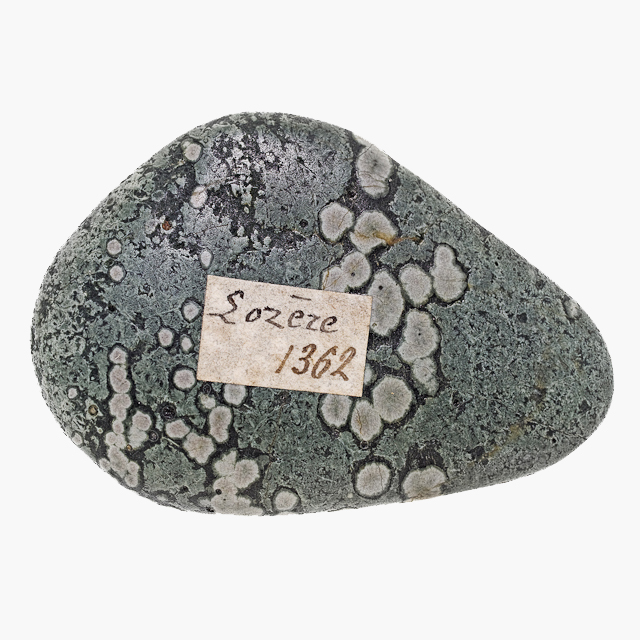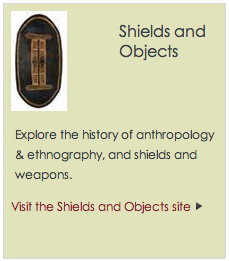Snake Stone, France

Transferred from the Wellcome Institute in 1985; 1985.52.705
Variolites are green and white crystalline rocks, and are commonly found in the region of the Durance river in southeastern France, near the Italian border. The mottled markings resemble those on the skin of a snake, and may be why they became known as a ‘snake stones’, ‘venom stones’, or ‘poison stones’.
The belief in snake stones, which were thought to have magical properties that could act as an antidote to poison and cure snake bites, was once common in many parts of western Europe where venomous adders and vipers are native. The stones, which were highly sought and expensive to purchase, were dipped in water, which was then given to the afflicted person or animal to drink.
The spots on variolites were also thought to resemble smallpox pustules, and the stones were used throughout the Middle Ages as a cure for smallpox, which is called variola in Latin (from varius, meaning ‘spotted’). They were collected from the Durance river bed and distributed throughout Europe.
The healing powers of stones were first recorded by the Roman author Pliny the Elder in his famous encyclopedia, The Natural History of Pliny, in the first century AD. According to Pliny, marbles were worn as amulets to cure headaches as well as snake bites. Green marbles are also mentioned for their healing powers in Thomas Nicol’s Lapidary, a catalogue of the physical and medicinal properties of stones published in 1652. According to Nicol, green marbles were worn for protection from the ‘stings of serpents’, plagues and pox.






